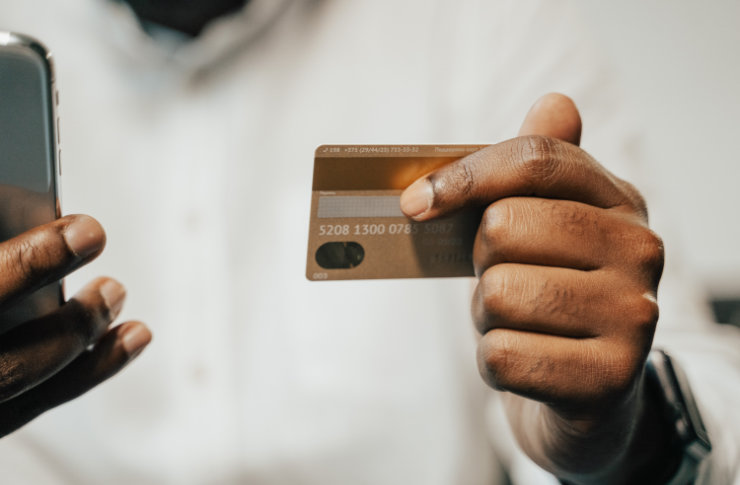Exploring Buy Now Pay Later Options in United States: How It Works
The Buy Now Pay Later (BNPL) system has gained traction in the United States, allowing consumers to make purchases and defer payments. This payment method offers flexibility, enabling shoppers to manage their budgets more effectively. Understanding its workings, benefits, and considerations is essential for informed decision-making in the U.S. market.

The financial landscape in the United States has witnessed a significant shift with the rise of Buy Now Pay Later services, fundamentally changing how consumers approach purchasing decisions. These innovative payment solutions have gained tremendous popularity, particularly among younger demographics who seek alternatives to traditional credit products. BNPL services essentially allow shoppers to make purchases immediately while spreading the cost over several weeks or months, typically without interest charges when payments are made according to the agreed schedule.
Understanding the Buy Now Pay Later Concept in United States
Buy Now Pay Later operates on a straightforward principle: consumers can purchase items immediately and pay for them in predetermined installments over time. Unlike traditional credit cards, most BNPL services require minimal credit checks and offer instant approval decisions. The typical structure involves splitting a purchase into three to four equal payments, with the first payment due at the time of purchase and subsequent payments scheduled at regular intervals, usually every two weeks or monthly.
The application process is generally streamlined and digital-first. Consumers create an account with a BNPL provider, provide basic personal and financial information, and receive an instant spending limit. This limit is determined by various factors including income, existing financial obligations, and the provider’s risk assessment algorithms. The entire process can often be completed within minutes, making it an attractive option for spontaneous purchases or when immediate access to products is desired.
Key Features and Benefits of Buy Now Pay Later in United States
The primary advantage of BNPL services lies in their accessibility and convenience. Unlike traditional credit products, these services typically don’t require extensive credit history checks, making them available to consumers who might not qualify for credit cards or prefer not to use them. Many BNPL providers offer zero-interest financing when payments are made on time, which can be significantly more cost-effective than credit card interest rates.
Flexibility represents another crucial benefit. Consumers can manage their cash flow more effectively by spreading larger purchases across multiple payment periods. This feature proves particularly valuable for essential purchases like electronics, furniture, or clothing when immediate full payment might strain monthly budgets. Additionally, many BNPL services integrate seamlessly with online shopping platforms and mobile apps, creating a smooth checkout experience.
The transparency of BNPL services also appeals to many users. Payment schedules are clearly outlined upfront, with specific dates and amounts clearly communicated. This predictability helps consumers budget more effectively and avoid the revolving debt cycle often associated with credit cards.
| Provider | Services Offered | Cost Structure | Key Features |
|---|---|---|---|
| Klarna | Online and in-store payments | $0 interest for on-time payments, late fees $7-35 | Shopping app, price tracking, rewards |
| Afterpay | Installment payments | $0 interest, late fees up to 25% of order value | Real-time spending notifications, merchant partnerships |
| Affirm | Flexible payment terms | 0-36% APR depending on creditworthiness | Longer repayment periods, transparent pricing |
| Sezzle | Quarterly payments | $0 interest for on-time payments, $10 late fee | Credit building features, spending insights |
| PayPal Pay in 4 | Four installment payments | $0 interest, no late fees | Integration with PayPal ecosystem, buyer protection |
Prices, rates, or cost estimates mentioned in this article are based on the latest available information but may change over time. Independent research is advised before making financial decisions.
Considerations When Using Buy Now Pay Later Options in United States
While BNPL services offer numerous advantages, consumers should carefully consider potential drawbacks and risks. The ease of approval and use can lead to overspending, as the immediate gratification of purchase combined with deferred payment can mask the true financial impact. Multiple BNPL accounts across different providers can quickly accumulate, potentially creating a complex web of payment obligations that becomes difficult to manage.
Late payment consequences vary significantly among providers. While some charge relatively modest late fees, others impose more substantial penalties that can quickly escalate the total cost of purchases. Additionally, missed payments may impact credit scores, as many BNPL providers now report payment history to credit bureaus. This reporting can be beneficial for building credit with on-time payments but detrimental when payments are missed.
Consumer protection regulations for BNPL services are still evolving, meaning users may have fewer protections compared to traditional credit products. Return policies, dispute resolution, and refund processes can be more complex when purchases are financed through BNPL services, particularly if issues arise after partial payments have been made.
Another important consideration involves the impact on overall financial planning. While BNPL services can provide short-term flexibility, they shouldn’t replace comprehensive budgeting and emergency savings strategies. Consumers should ensure they have reliable income to meet payment obligations and avoid using BNPL services for essential expenses that might indicate underlying financial stress.
The regulatory environment surrounding BNPL services continues to develop, with potential changes in oversight and consumer protection measures. Staying informed about these developments and understanding the terms and conditions of each service provider remains crucial for responsible usage. As these services become more integrated into the broader financial ecosystem, consumers benefit from treating them as legitimate financial products that require the same careful consideration as any other form of credit.




